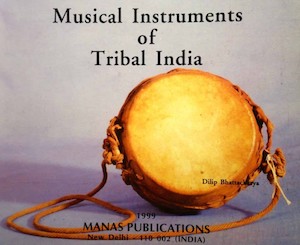Music and Minorities Research Center, mdw –University of Music and Performing Arts Vienna, Austria | Correspondence: [email protected]
The study of music in relation to minority communities has grown into a substantial field of research in ethnomusicology and adjacent disciplines in the social sciences and humanities over the past decades. Indeed, the roots of music and minorities research could be traced back to the very beginnings of what can be called academic music studies in the second half of the 19th century. For one thing, the advanced colonialist/imperialist world system and its corresponding ideological superstructure enabled and encouraged European and North American scholars to study the musics of various indigenous groups from around the world, groups that due to colonial supremacy turned into minorities. Another historical precursor of music and minorities studies can be found in European folk music research and is related to the development of nation-states during the 19th century. Musical folklorists researched minorities outside the political boundaries of the respective nation-state to which the scholars felt obligated if these minorities were understood to belong to the idealized nation. I would characterize these two main tendencies of dealing with minorities in the past as either “exoticism” or “extension of the nation,” the latter being especially characteristic for Europe. […]
M&M is an international academic journal and as such it is published in the lingua franca of 21st century scholarship, i.e., English. But M&M is also committed to the right of communities and individuals to know what is published about them and seeks to promote circulation of its content beyond academic audiences. In this regard, English can prove to be an obstacle. While the publication of additional non-English versions of complete articles would not be feasible for practical reasons, M&M, however, encourages authors to provide additional non-English abstracts in languages that are relevant to a given article’s topic.
Source: Hemetek, Ursula. 2021. “Launching a New Scholarly Journal on Music and Minorities”. Music and Minorities 1 (December). Vienna, Austria. https://doi.org/10.52411/mm.2021.2.
URL: https://journals.qucosa.de/mm/article/view/2/24
Date Visited: 9 December 2021
[Bold typeface added above for emphasis]
The tribes and castes in India are communities apart. Those who belong to castes belong to no tribes, and those who belong to tribes are outside the caste pyramid. What brings them together is probably their love for songs.
Ganesh Devy in What unites Indians is a love for songs >>
Publications >>

Musical Instruments of Tribal India
by Dilip Bhattacharya >>
See also
Audio | Santali Traditional and Fusion Songs: Ghosaldanga Bishnubati Adibasi Trust – West Bengal
Crafts and visual arts | Masks
India’s tribal, folk and devotional music: Secular and ceremonial songs
Memory of the World Programme – Unesco
Music and dance | Musicology | Adivasi music and the public stage by Jayasri Banerjee
Video | Banam lutes and fiddles of the Santal people – Jharkhand & West Bengal
Video | Celestial Dancers of Manipur
Video | Cultural traditions of the Halakki people – Karnataka
Video | Khasi musical heritage of Meghalaya
Video | Kota women’s dance: Shivaratri celebrations – Nilgiris – Tamil Nadu
Video | Santali video album “Ale Ato” (Our Village, Part 1 of 2) – West Bengal
Video | South Gujarat tribal music documentation by Bhasha – Gujarat
Video | Tribes in Transition-III: “Indigenous Cultures in the Digital Era”
Video | Safe contents for educational use on many topics (music, visual arts and more)
Research the above issues with the help of Shodhganga: A reservoir of theses from universities all over India, made available under Open Access >>